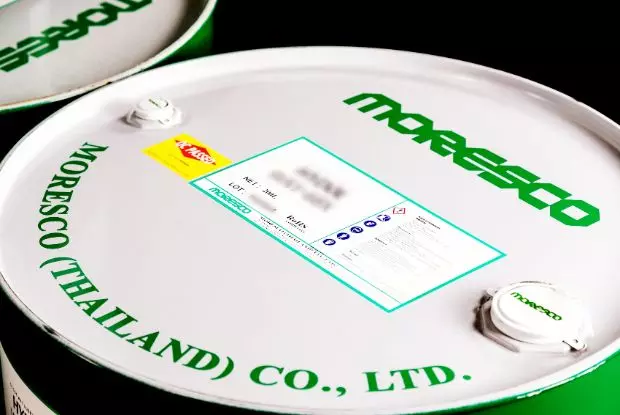Different Glass-Ceramic Materials in Cutting Blade Manufacturing and Applications
Prospects of Glass-Ceramic Cutting Blade Manufacturing and Applications
Today, most global cutting tools are made from hard alloys, relying heavily on rare metals like tungsten and cobalt, with cobalt mining often posing ethical issues. As resource prices rise, manufacturing costs and energy use increase, prompting the search for alternatives to hard alloys in cutting tool materials. Glass-ceramics have attracted attention as a potential substitute, given their versatile chemical composition, physical properties, lower manufacturing costs, and reduced energy consumption. According to German data, glass-ceramic annual production reaches 6,784 tons with energy consumption at 18.52 TWh, using 2.730 MWh per ton. With a density of 2.66 g/cm³, each ton can yield up to 601 cutting tools, underscoring the potential of glass-ceramics in cutting tool applications.
Advantages and Application Scope of Glass-Ceramics
Glass-ceramics, discovered over 70 years ago, are widely used across various fields, especially in optics, where they are integral to color filters and laser-protective lenses. In the medical field, glass-ceramics serve in dental implants, bone regeneration, and cancer treatment research, showcasing high grinding performance. Technically, their hardness and machinability make glass-ceramics significant in high-speed grinding, chip resistance, and crack propagation studies. Certain glass-ceramics, like non-porous mica glass, are shown to be effective for indexable inserts, particularly in soft material machining due to their machinability despite lower hardness.
Application of Glass-Ceramics in Cutting Tools
Exploratory testing of four glass-ceramics — Macor (mica glass-ceramic), Clearceram Z, Robax, and Zerodur (lithium aluminosilicate glass-ceramic) — has demonstrated their suitability for cutting polyether ether ketone (PEEK) and aluminum alloy EN AW 2007. PEEK is a high-temperature thermoplastic commonly used industrially, and EN AW 2007 aluminum alloy is frequently employed in automated lathing.
The glass-ceramics performed well in durability and workability with these materials, solidifying their foundation as potential cutting tool materials and setting a direction for future research. With increasing environmental and cost-efficiency demands, glass-ceramics represent a promising sustainable alternative, offering lower energy consumption and environmentally friendly production processes compared to traditional hard alloys and high-speed steel.
Glass/Ceramic Cutting Fluids
For specialized cutting of glass and ceramics, MORESCO Matsumura Oil from Japan offers two exclusive cutting fluids: MORESCO GR-4 & MORESCO GR-5. These utilize mild alkaline additives, reducing skin irritation. Their excellent anti-foaming and settling properties ensure that even in high-pressure cooling systems, foaming is not a concern.
Their excellent anti-foaming and settling properties ensure that even in high-pressure cooling systems, foaming is not a concern. Cutting particulates settle into sludge in the coolant tank, with the sludge’s solidification dependent on fluid performance. Excessive solidification complicates cleaning, making settling speed and sludge consistency primary considerations in glass grinding (Recommended Cutting Fluid for Glass: MORESCO GR-5, Fully Synthetic). Enhanced lubrication of these fluids minimizes noise during glass and ceramic cutting, preventing tool damage and sparking from insufficient lubrication. For glass and ceramic materials, specialized cutting fluids significantly improve product yield and workpiece surface finish (Recommended Cutting Fluid for Ceramics: MORESCO GR-4, Fully Synthetic). ◆ Referenced from: SpringerLink
◆ Source: https://rdcu.be/dWZDP
Different Glass-Ceramic Materials in Cutting Blade Manufacturing and Applications | ISO 9001:2015 Certified Industrial Lubricants Manufacturer And Supplier Since 1982 | HLJH
Located in Taiwan, HAI LU JYA HE CO., LTD has been an industrial lubricant manufacturer and supplier. Main products, include metalworking fluids, industrial lubricants, soluble cutting oils, semi-synthetic cutting oils, synthetic cutting fluids, neat cutting oils, rust preventive oils, slideway oils and hydraulic oils, which can reach 150 tons of cutting fluids per month.
HAI LU JYA HE Co., Ltd. (HLJH) have been focusing on manufacturing and marketing the industrial lubricants more than 30 years. Our fundamental belief is to make a harmful, friendly with lives, businesses, and leaving a lasting legacy for generations to come. We offer metalworking fluids (water-based cutting fluid, neat cutting oil), rust preventive oil, hydraulic oil, slideway oil, spindle oil, gear oil and so on that cover the whole industrial lubricant value chain. Our fundamental belief is to offer harmful and friendly products such as water-based cutting oils, neat cutting oil, rust preventive oil, hydraulic oil, slideway oil, spindle oil, gear oil and so on that cover the whole industrial lubricant value chain.
HLJH has been offering customers high-quality metalworking oils and fluids, both with advanced technology and 39 years of experience, HLJH ensures each customer's demands are met.



